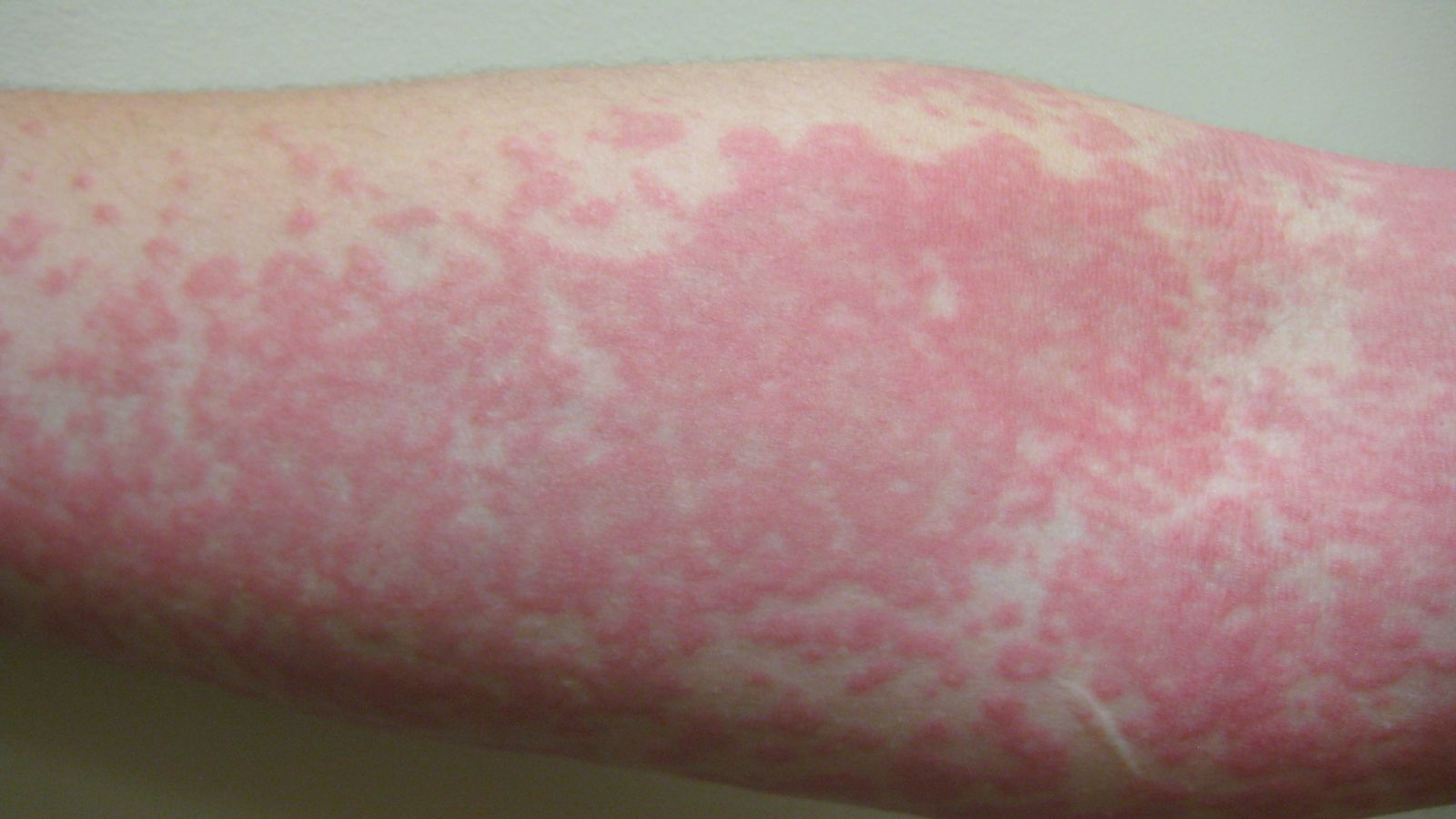 A hive-type rash, or urticaria, is among the three skin conditions that can be the only symptom of COVID-19.
A hive-type rash, or urticaria, is among the three skin conditions that can be the only symptom of COVID-19.
Credit Pic: James Heilman
Three skin conditions are each identified by researchers as potentially the sole indicator of the illness.
A skin rash can sometimes be the only symptom of people infected with COVID-19, a study has concluded.
Three types of rashes are identified in the research by King’s College London, leading those behind the study to call for skin rashes to be included as a fourth key symptom of COVID-19.
The three established symptoms of COVID-19, as recognised by the NHS, are a high temperature, a new and continuous cough, and a loss or change to your sense of smell or taste.
The study – which has been published online but has not yet been peer-reviewed – drew upon data from the 336,000 regular UK users of the COVID Symptom Study app.
With that data, researchers found 8.8% of people who tested positive for the virus suffered a skin rash among their symptoms, compared with 5.4% of those who tested negative.
Similar results were seen in a further 8.2% of users with a rash who did not have a coronavirus test, but still reported the three established COVID-19 symptoms: a cough, fever or loss of smell.
The study said rashes associated with COVID-19 fell into three categories:
Hive-type rash (urticaria):
- The sudden appearance of raised bumps on the skin, which come and go quite quickly over hours, and are usually very itchy.
- It can involve any part of the body, and often starts with intense itching of the palms or soles, and can cause swelling of the lips and eyelids.
- These rashes can present quite early on in the infection, but can also last a long time afterwards.
‘Prickly heat’ or chickenpox-type rash:
- Areas of small, itchy red bumps that can occur anywhere on the body, but particularly the elbows and knees as well as the back of the hands and feet.
- The rash can persist for days or weeks.
COVID fingers and toes (chilblains):
- Reddish and purplish bumps on the fingers or toes, which may be sore but not usually itchy.
This type of rash is most specific to COVID-19, is more common in younger people with the disease, and tends to present later on.
Lead author Dr Veronique Bataille, consultant dermatologist at St Thomas’ Hospital and King’s College London, said: “Many viral infections can affect the skin, so it’s not surprising that we are seeing these rashes in COVID-19.
“However, it’s important that people know that in some cases, a rash may be the first or only symptom of the disease.
“So if you notice a new rash, you should take it seriously by self-isolating and getting tested as soon as possible.”
Although COVID-19 is often thought of as a virus that affects the respiratory system, rashes had been reported in a number of cases among people in China and elsewhere in Europe who had needed hospital treatment for severe symptoms of the disease.
However, this is the first and largest study to systematically gather data about skin rashes in milder cases across the wider population.
Consultant dermatologist Dr Justine Kluk said: “These findings highlight the importance of keeping an eye on any new changes in your skin, such as lumps, bumps or rashes.
“Early reporting of COVID-associated rashes by members of the public and recognition of their significance by frontline healthcare practitioners – such as GPs, NHS 111 and hospital staff – may increase the detection of coronavirus infections and help to stop the spread.”
News source : news.sky.com
Authors : Veronique Bataille, Alessia Visconti, Niccolo’ Rossi, Benjamin Murray, Abigail Bournot, Wolf, Sebastien Ourselin, Claire Steves, Timothy Spector, Mario Falchi
doi: https://doi.org/10.1101/2020.07.10.20150656
